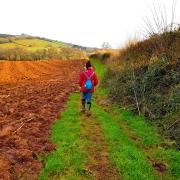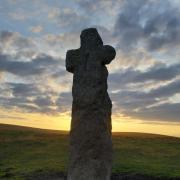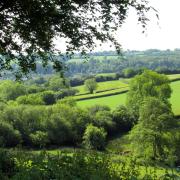Photographer David Chapman looks at different habitats and what wildlife can be found in them. This month he’s observing one of Devon’s upland rivers
Watch carefully from the riverbank for the wildlife that lives there
It had rained heavily last night and I stood beside the river in awe of its power. Through the white noise of the crashing water I could hear rocks rolling on the riverbed, driven by the force of the water, and felt the ground tremble as boulders shifted.
I was on the bank of the East Lyn River near Watersmeet, on Exmoor, which despite its close proximity to the sea is an upland river, the type of which we have numerous examples around the county, particularly on Exmoor and Dartmoor. Upland rivers are characterised by their fast-flowing water with riffles, cascades, waterfalls and white water, they drain hilly areas and flow through steep, V-shaped valleys with interlocking spurs.
My attention was taken by a grey heron which stood stock still. Feet in the water. It struck me how rare it is to find a wild bird that moves less than the environment in which it lives! I stood almost as still as the heron, watching as it waited for a snack to come within reach. Eventually it gave up and launched gracefully into the air, drifting down stream to find a better spot.

The flick of a tail and a flash of yellow could mean only one thing, a grey wagtail. These birds will be nesting soon, despite the wintery conditions of the river along which they live. For the uninitiated it is easy to confuse the grey and yellow wagtails because both have a bright yellow belly and undertail. However the yellow wagtail is a summer visitor to the UK and is rare in Devon. By contrast the grey wagtail is common throughout the year, particularly along rivers and other watercourses.

Finally I saw the bird I had come to see, the one that does more to define this type of river than any other, the dipper (2). Now here is a bird which has evolved to fill a niche. Its appearance isn’t astonishing - it is the size of a blackbird and the shape of a wren, dark all over except for an obvious white breast - but its behaviour is. Diving underwater, where it walks on the riverbed and swims against the current, the dipper can turn over stones in search of food.

Dippers take a variety of prey including the larvae of caddis flies, which conceal themselves in tubes camouflaged by grit and river debris. They might even take small fish such as bullheads which hide under stones. When posing on a rock in the middle of a river the dipper reveals the reason for its name as it incessantly bobs up and down.

To see more of David’s photography visit his website at davidchapman.org.uk



























